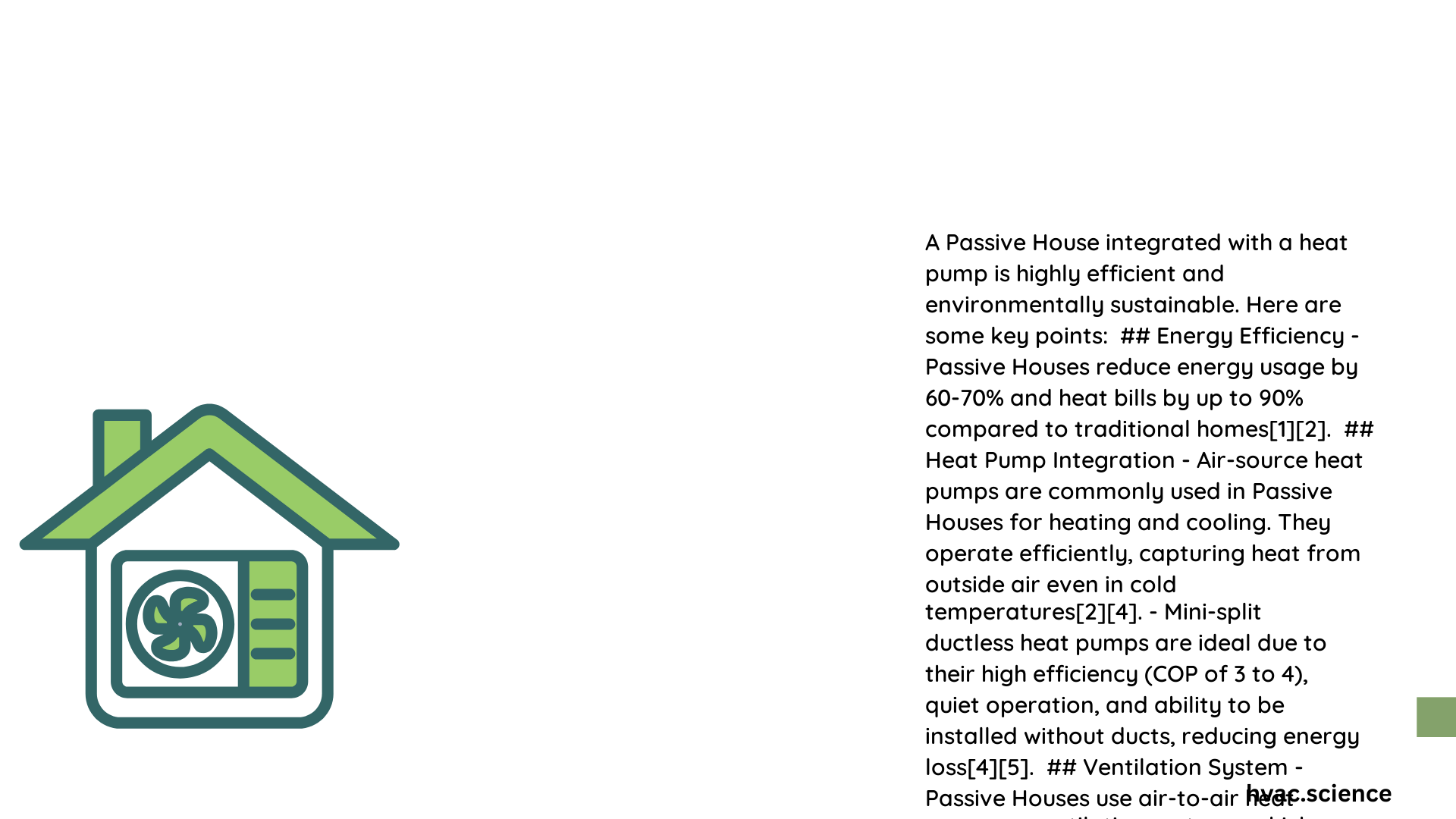Passive houses with heat pumps represent the pinnacle of sustainable building technology, combining ultra-low energy consumption with advanced thermal management. By integrating high-performance heat pump systems into meticulously insulated structures, homeowners can achieve remarkable energy savings, reduce carbon emissions, and create supremely comfortable living environments that challenge traditional heating and cooling approaches.
What Makes Heat Pumps Critical for Passive House Performance?
How Do Heat Pumps Enhance Passive House Efficiency?
Heat pumps are transformative technologies in passive house design, offering multiple advantages that traditional HVAC systems cannot match:
- Energy Transfer Mechanism
- Moves heat instead of generating it
- Requires minimal electrical input
-
Operates across diverse temperature ranges
-
Efficiency Metrics
- High SEER2 ratings (15-20)
- Superior HSPF2 performance (8-10.5)
- Exceptional Coefficient of Performance (COP)
| Heat Pump Type | Average COP | Efficiency Range |
|---|---|---|
| Air Source | 3.0 – 4.0 | Good |
| Ground Source | 4.0 – 5.5 | Excellent |
| Hybrid | 3.5 – 4.5 | Very Good |
What Technical Specifications Matter Most?
Passive house heat pump selection demands rigorous evaluation across multiple parameters:
- Thermal Performance
- Minimum HSPF2 rating: 7.5
- Recommended HSPF2 rating: 10.0+
-
Temperature operation range: -15°F to 115°F
-
System Compatibility
- Low-temperature functionality
- Minimal energy consumption
- Integrated ventilation support
Why Choose Heat Pumps for Passive House Construction?
Economic Benefits
Implementing heat pumps in passive houses delivers substantial financial advantages:
- Reduced energy expenditure (60-90% savings)
- Lower maintenance requirements
- Extended equipment lifespan
- Potential government incentives
Environmental Advantages
- Minimal carbon footprint
- Renewable energy integration
- Reduced greenhouse gas emissions
- Sustainable building practices
How to Optimize Heat Pump Performance?
Critical optimization strategies include:
- Precise system sizing
- Advanced insulation techniques
- Strategic equipment placement
- Regular maintenance protocols
- Smart control system integration
What Installation Considerations Exist?
Key factors influencing heat pump installation:
- Building envelope integrity
- Thermal bridge elimination
- Ventilation system compatibility
- Local climate conditions
- Electrical infrastructure
Technical Recommendations

Recommended Heat Pump Specifications
- Capacity Range: 9,000 – 24,000 BTU/h
- Minimum Efficiency: 15 SEER2
- Temperature Tolerance: -20°F to 120°F
- Noise Level: Below 50 decibels
Professional Implementation Guidelines
- Conduct comprehensive energy modeling
- Perform detailed heat load calculations
- Select appropriate heat pump technology
- Ensure proper system integration
- Implement professional commissioning
Advanced Considerations
Emerging Technologies
- Magnetic refrigeration
- CO2 heat pump systems
- Advanced inverter technologies
- Predictive maintenance algorithms
Final Insights
Passive houses with heat pumps represent a sophisticated approach to sustainable building, offering unprecedented energy efficiency, comfort, and environmental responsibility.
Potential Limitations
- Higher initial investment
- Complex installation requirements
- Technical maintenance expertise needed
Expert Recommendations
- Prioritize professional design consultation
- Invest in high-quality equipment
- Focus on holistic system integration
- Consider long-term performance metrics
References:
– Passive House Institute
– International Energy Agency
– U.S. Department of Energy
